What is Kohaku Namasu ?
Namasu (なます or 膾) is a Japanese dish in which fish, shellfish, vegetables, etc. are cut into thin strips and mixed with seasonings and vinegar. Kohaku Namasu (紅白なます) is one type of “namasu” made with thinly sliced carrots and daikon radish. The word “kohaku” means “red and white” in Japanese.
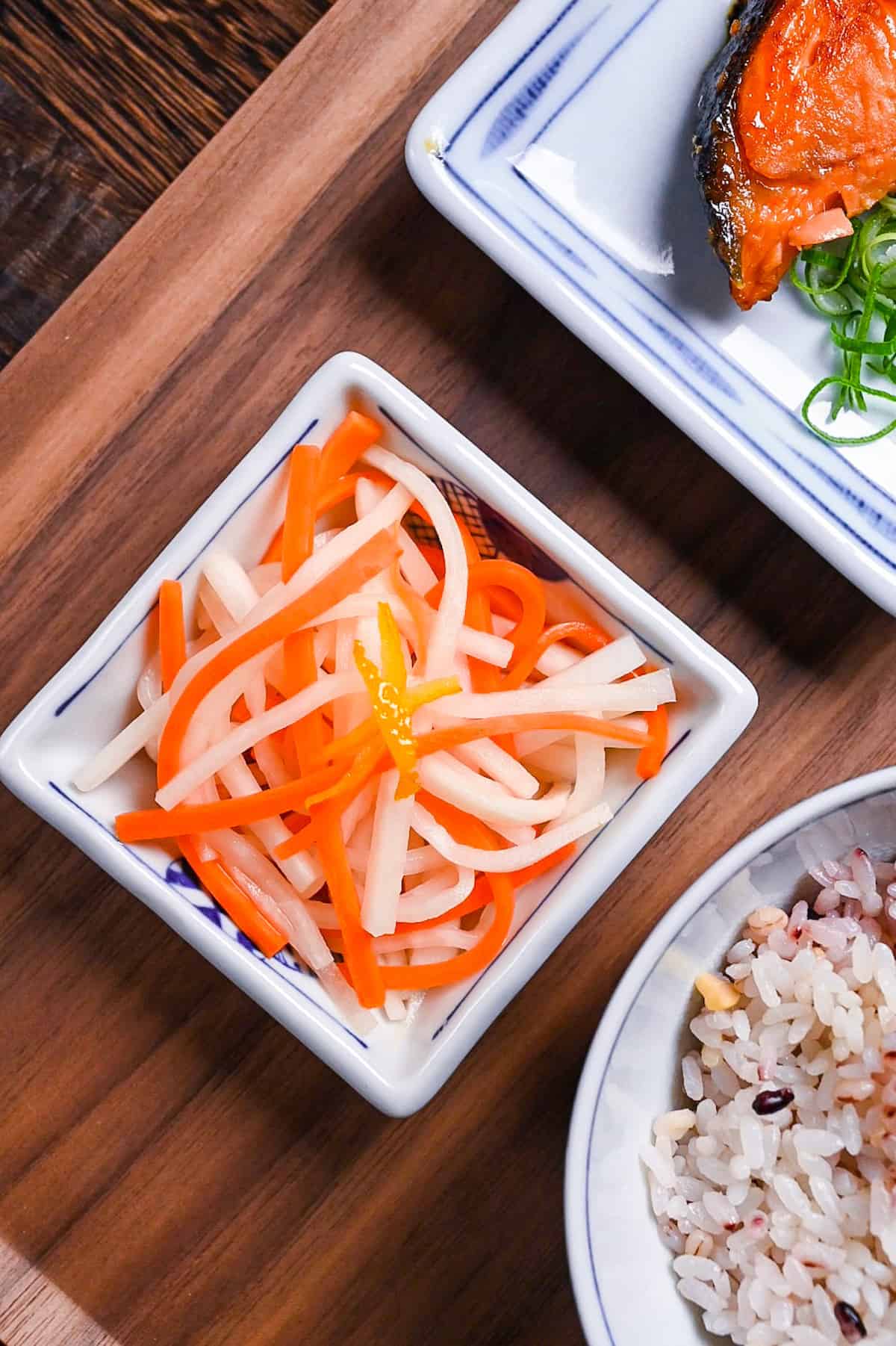
The colors of Kohaku Namasu resemble “mizuhiki” (水引), a red and white obi string that is used as a traditional decoration for celebrations and gifts. It is considered a good-luck charm to wish for family peace and because of its resemblance, Kohaku Nasamu is considered an auspicious dish and often served during Japanese New Year celebrations.
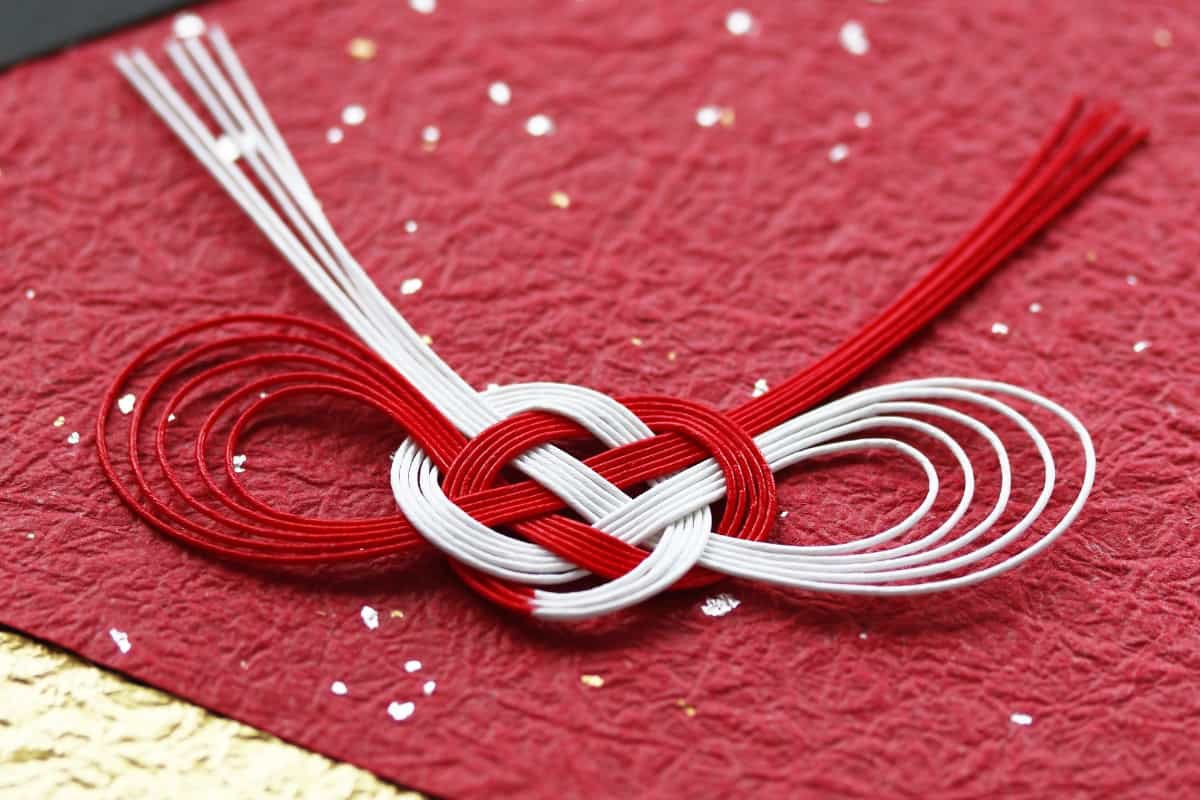
Visual Walkthrough & Tips
Here are my step-by-step instructions for how to make Kohaku Namasu at home. For ingredient quantities and simplified instructions, scroll down for the Printable Recipe Card below.
If you prefer to watch the process in action, check out my YouTube video of this recipe for a complete visual walkthrough!
Generally, the daikon and carrot in kohaku namasu are cut into thin “matchsticks” to represent “mizuhiki”. How thin you cut depends on preference, but I personally like slightly thick sticks so that they still have a good crunch. The ratio of daikon to carrot is usually 2:1.
Start by cutting off the round edges to make a block. The picture only shows daikon, but I use the same process for carrot too. You can peel and cut the leftovers, either adding them to the namasu (although the pieces won’t be uniform) or using them in another recipe such as hotpot.
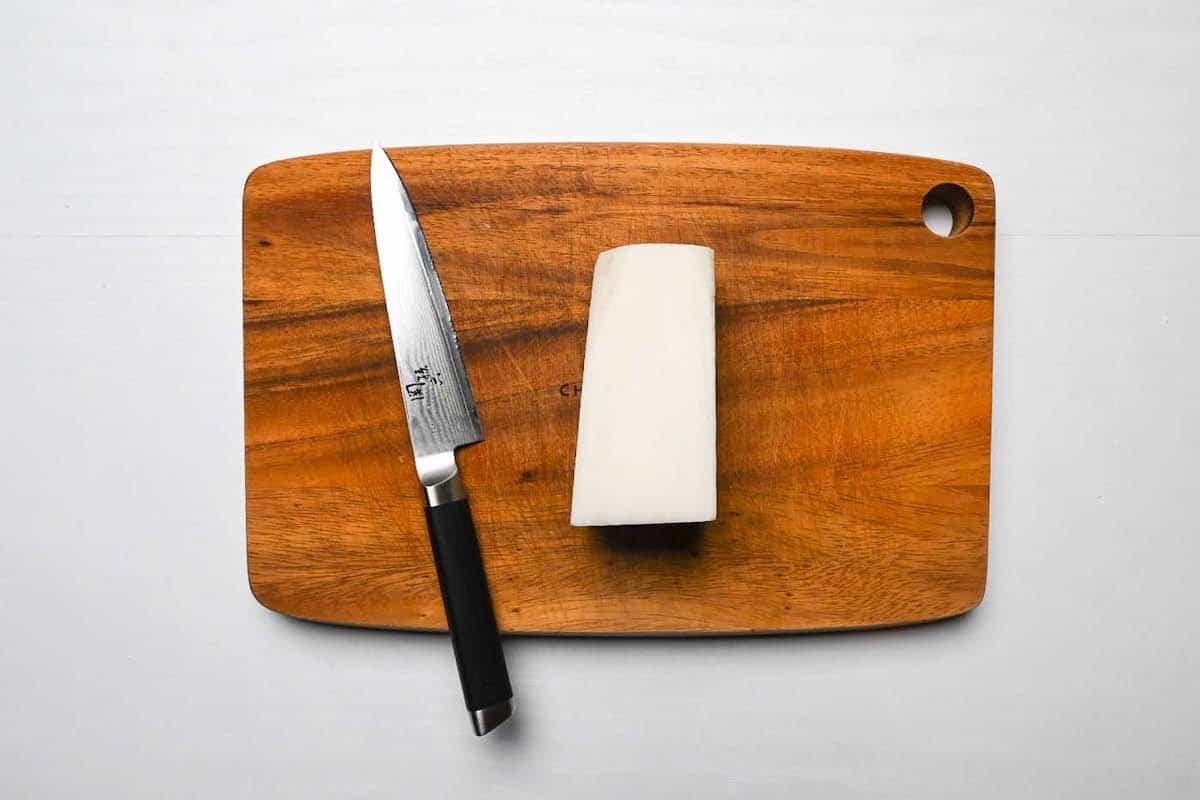
Then cut the block into thin slices.
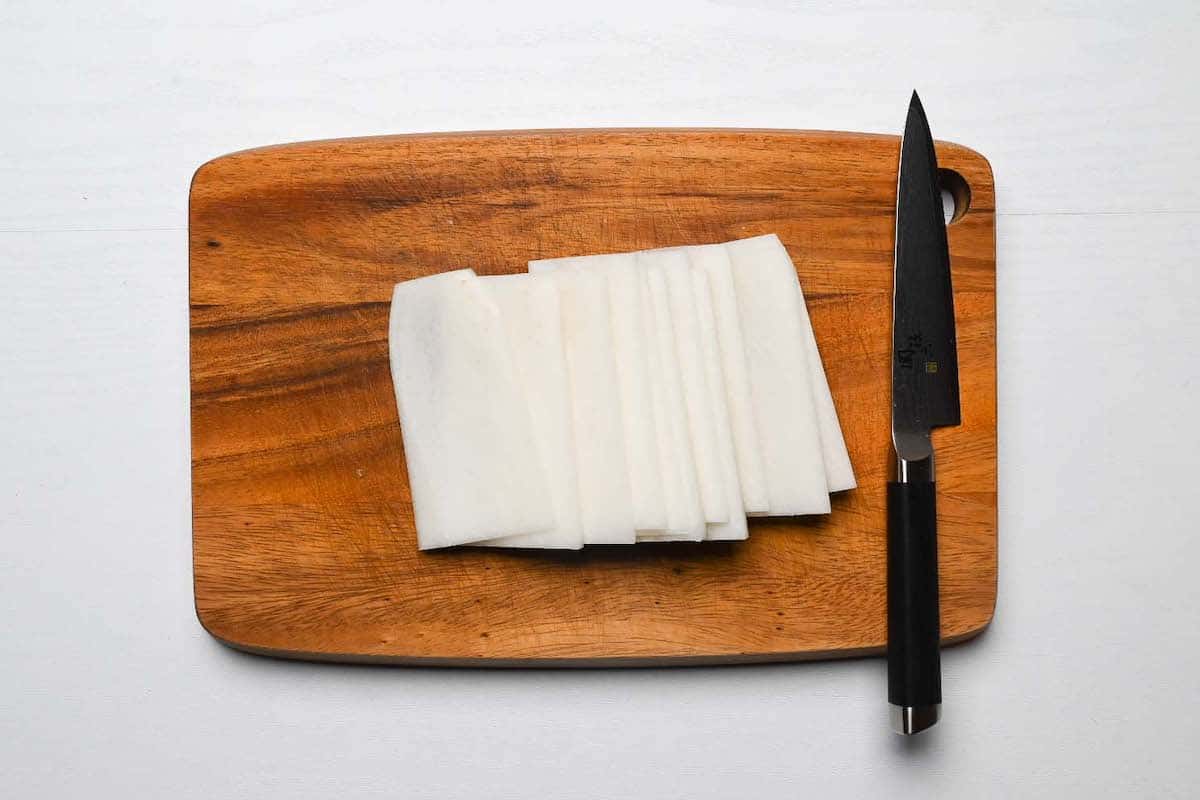
Finally, cut the slices into matchsticks about 2-3mm thick.
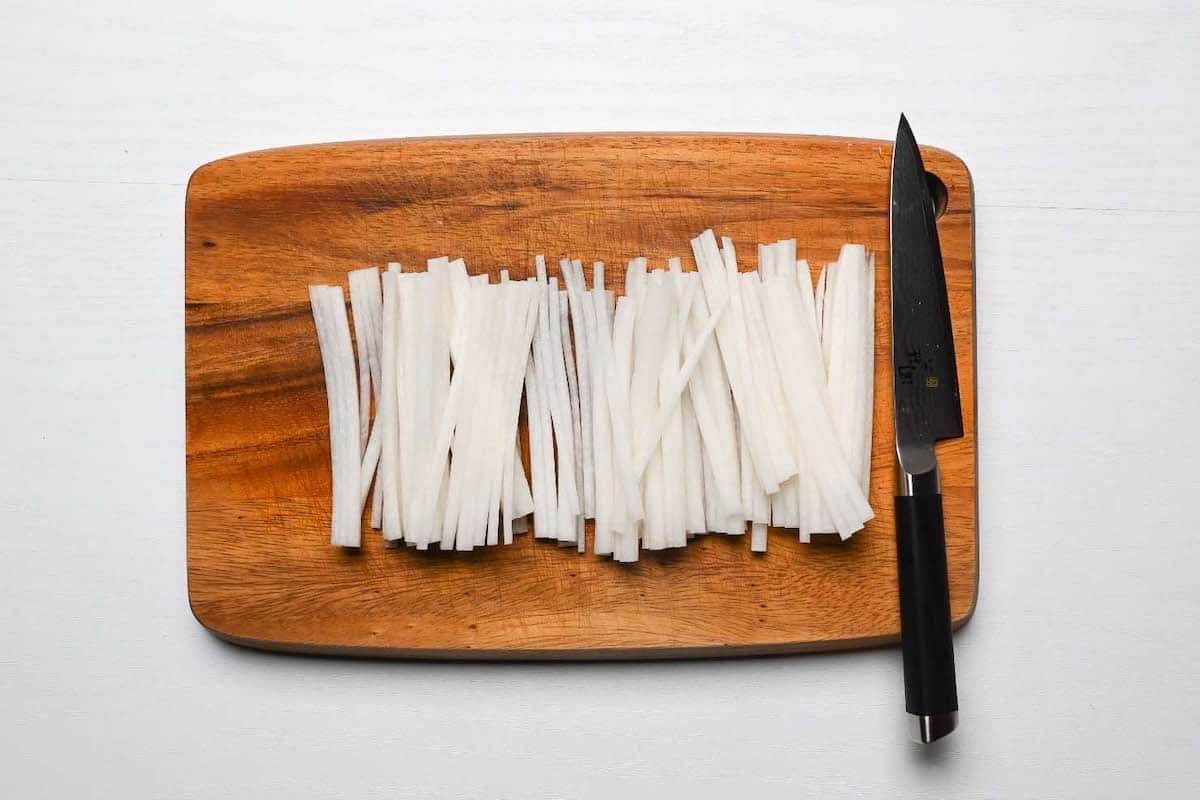
Place the carrot and daikon in a mixing bowl and add salt. Massage the salt into the carrot and daikon, then leave it for 15 minutes. During this time, the salt will extract the excess moisture which will prevent it from watering down the pickling liquid later.
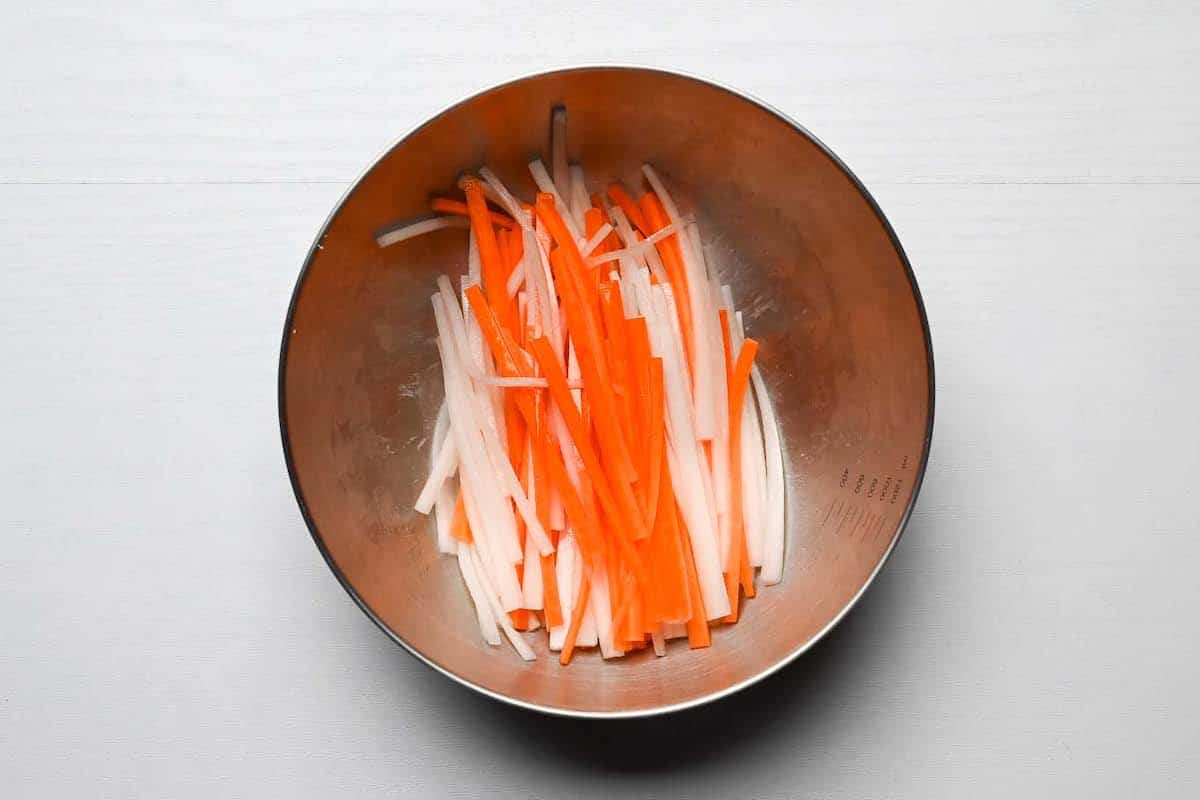
While the carrot and daikon are dehydrating, you can prepare the pickling liquid.
If you’re using fresh yuzu, wash and peel off some of the skin then cut it into thin strips. If you can’t get yuzu, you can grate orange or lemon peel instead.
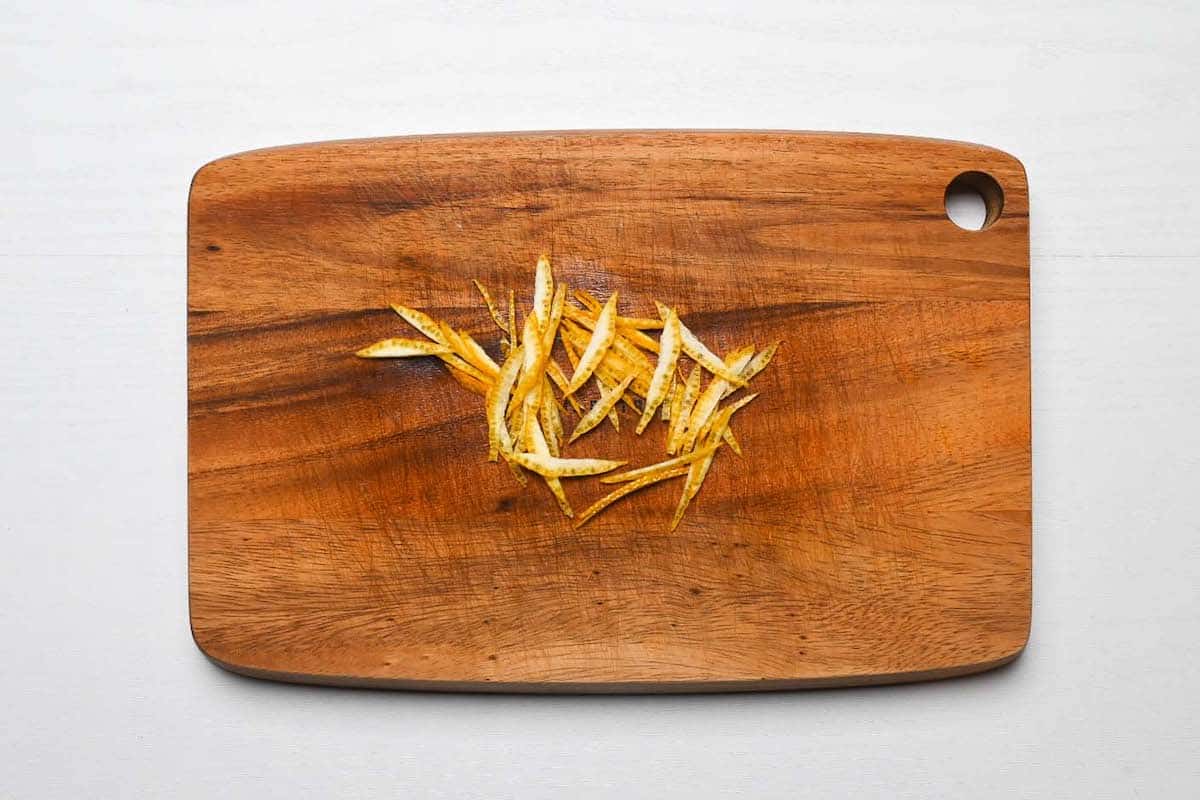
Next, take a sealable bag and add rice vinegar, yuzu juice, water, sugar, salt and soy sauce. Mix them together by scrunching the bag. Once the salt and sugar have dissolved into the mixture, add the yuzu peel and a piece of kombu (dried kelp).
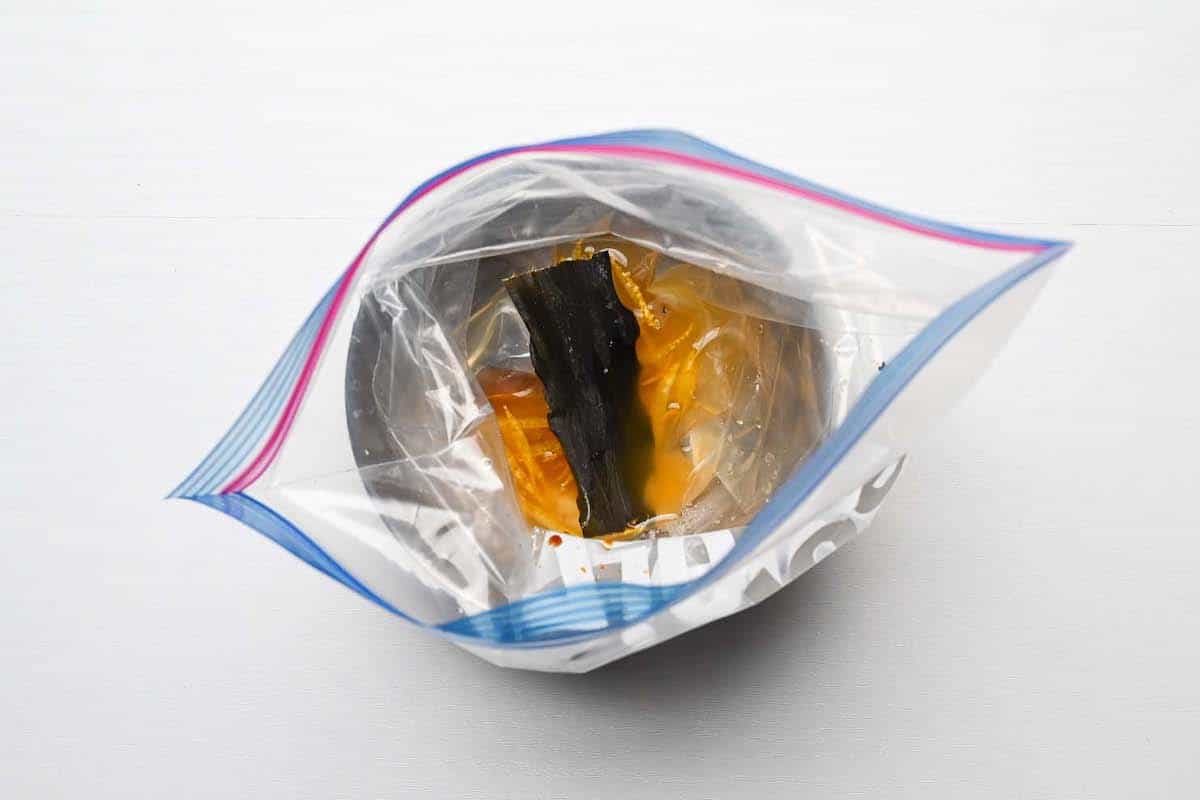
Once 15 minutes have passed, squeeze the carrot and daikon thoroughly and pour away the excess liquid.
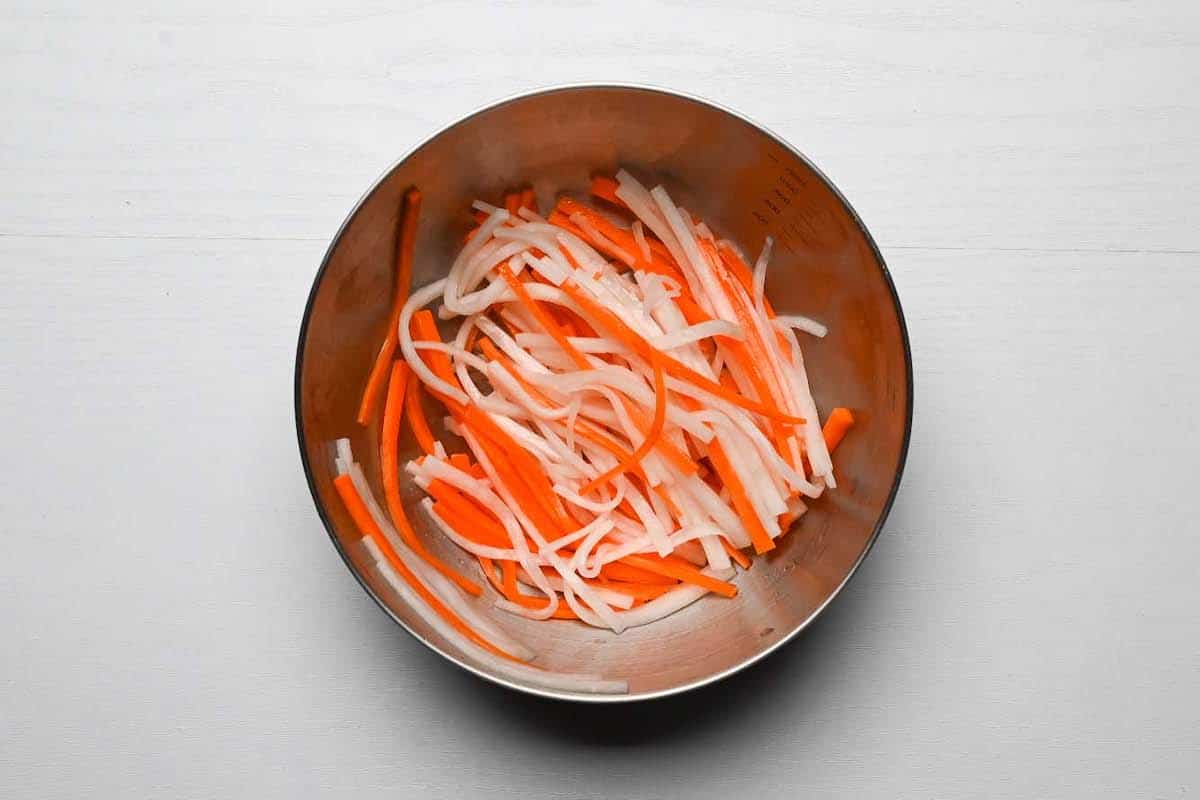
Make sure to remove as much moisture as possible otherwise, your pickling liquid will be watered down! Also, do not wash it after it’s been dehydrated!
Transfer the carrot and daikon strips into the ziplock bag, push the air out and seal it up. Store it in the fridge for at least 12 hours, preferably overnight.
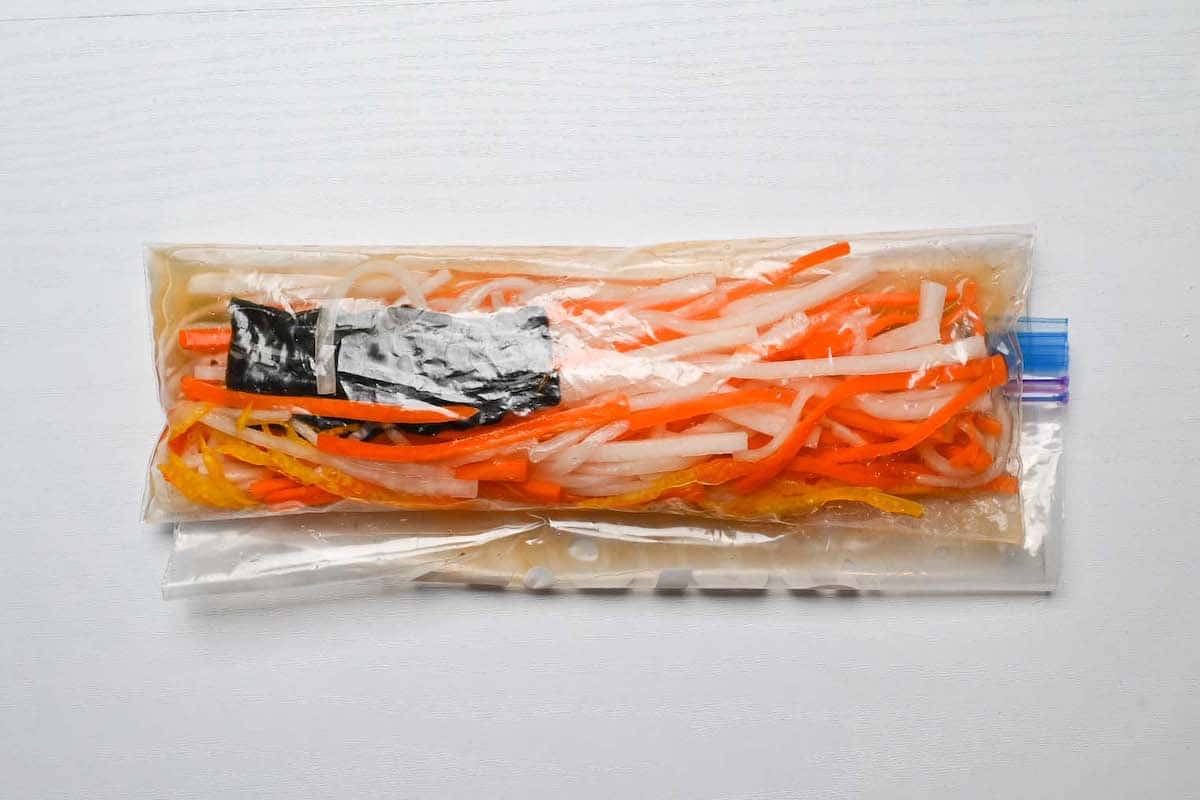
Serve as a side pickle or as part of a Japanese New Year Osechi meal! For an extra wow factor, some people like to scoop out half a yuzu and serve it in the skin. It’s a beautiful way to present kohaku namasu!
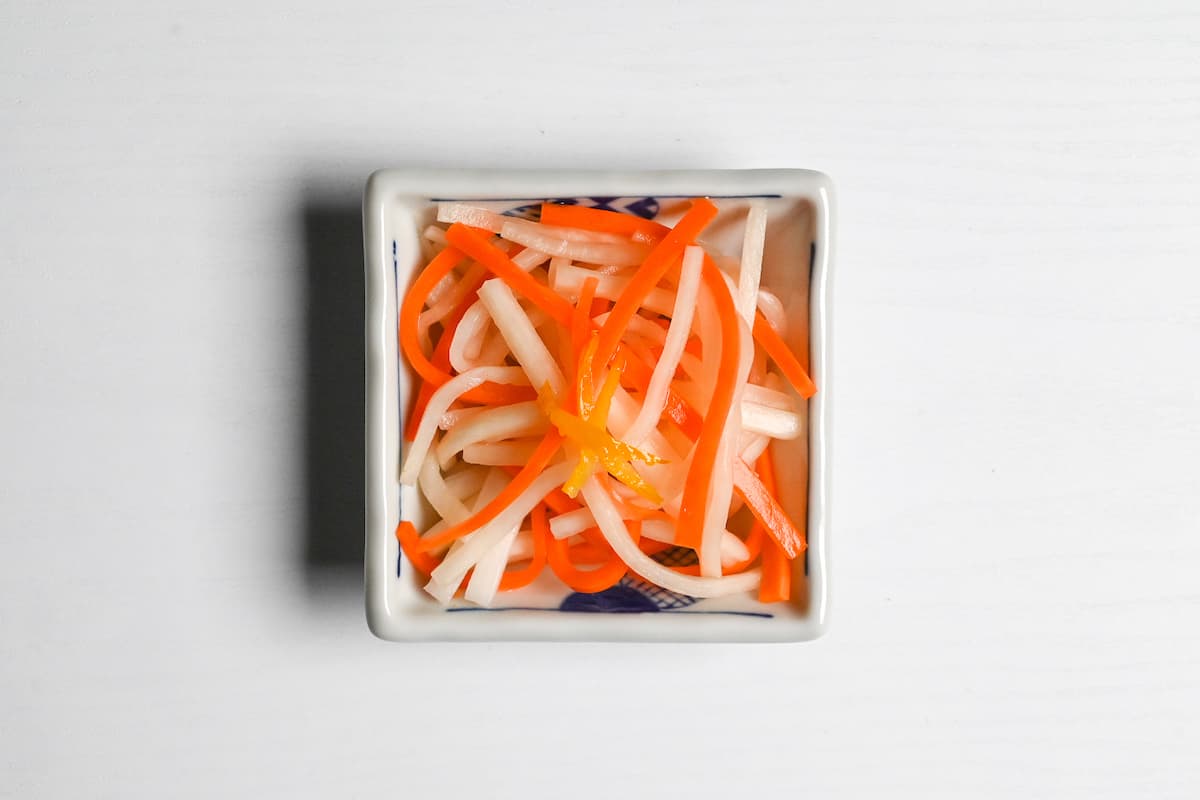
Enjoy!
Jump to Full Recipe Measurements
How to Store
Kohaku Namasu should be kept refrigerated and consumed within 4-5 days. I recommend making it 1-2 days before you plan to eat it. Unfortunately, this dish is not suitable for freezing.
Storage summary
Room temperature – Not recommended.
Refrigerated – 4-5 days.
Frozen – Not recommended.
FAQ
Osechi Ryori (おせち料理) are dishes eaten during New Year’s celebrations in Japan, and each element of Osechi has various wishes and meanings. The colors of Kohaku Namasu (red and white) are the symbols of celebration, and are associated with peace and tranquility.
In addition to this, it is said that the daikon and carrot, which have their roots in the ground and grow straight through the soil, are superimposed on the wish for “stability of the house and family business” and “to keep one’s feet on the ground”.
Namasu is said to have originated from China more than 2000 years ago and was made of thin strips of raw meat or fish, such as carp or sea bass. In Japanese, the word “Namasu” originally meant “raw meat”, but in the late Heian period (794-1185) the term was changed to mean fish and vegetables chopped into small pieces and mixed together. From there, the Japanese version of the dish developed, using its own unique ingredients.
Before the Muromachi period (1336-1573), Namasu was made using a condiment called irizake (煎り酒), which was made by adding dried bonito flakes and pickled plums to sake and boiling it down. These days, simple rice vinegar is used, often with the addition of dashi ingredients like kombu (dried kelp) to add umami to the dish. Up until the Edo period (1603-1867), Namasu was consumed as a “main dish” due to it more commonly being made with fish, however, these days, it is often made with vegetables and served as a side dish.
Kohaku Namasu made with daikon and carrot is the most well-known, but there are also regional variations of “Namasu” such as:
Hizu Namasu (氷頭なます): A local dish from cold/north regions, which is made from the cartilage part of the salmon’s snout.
Imo Namasu (いもなます): Namasu made with potatoes from around Iiyama City, Nagano Prefecture.
Mizu Namasu (水なます): Namasu made with fresh horse mackerel and other bluefish.
Nuta Namasu (ぬたなます): A dish of vegetables and seafood dressed with vinegared miso, which is considered as a type of namasu.
Kaki Namasu (柿なます): Kohaku namasu made with daikon radish and carrot with dried persimmon, from Nara Prefecture.
A good substitute for yuzu juice is a 50/50 mixture of fresh orange juice and lemon juice. This combination mimics yuzu’s unique balance of sweet and tart citrus flavors. You can also add a small splash of lime juice for extra complexity if desired!
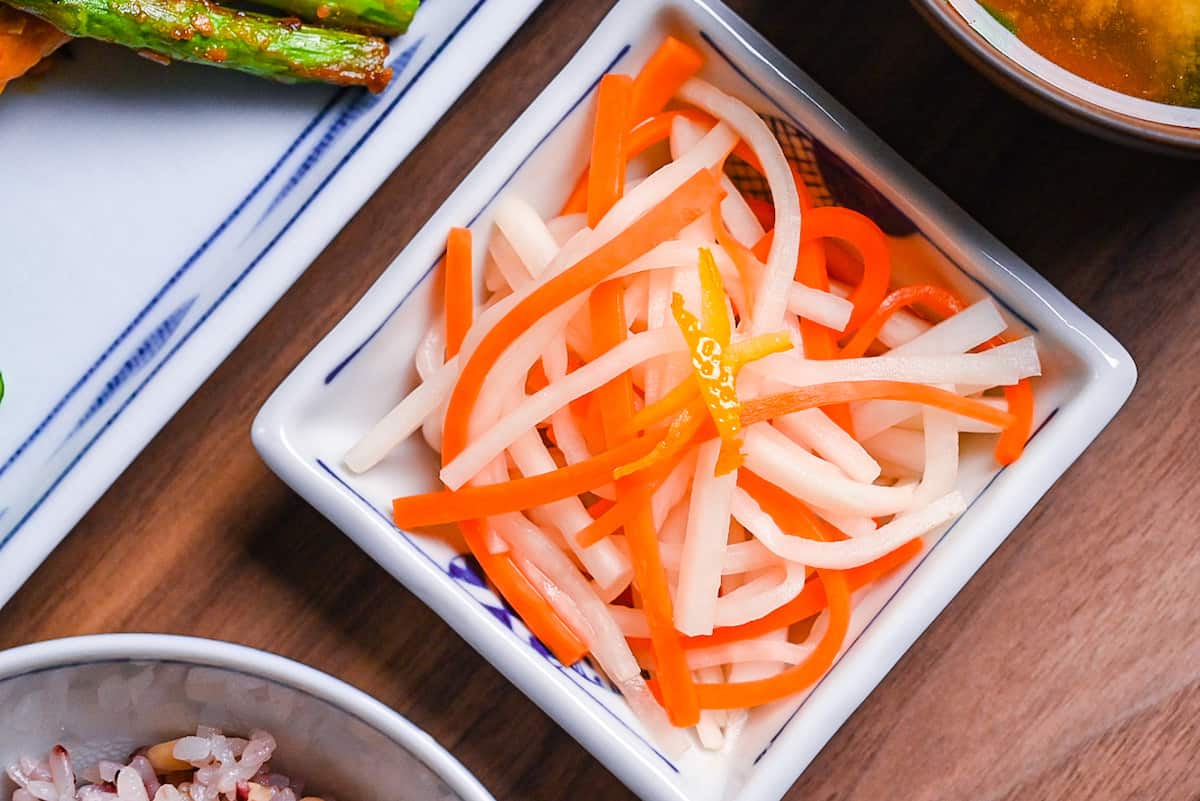
I hope you enjoy this Kohaku Namasu recipe! If you try it out, I’d really appreciate it if you could spare a moment to let me know what you thought by giving a review and star rating in the comments below. It’s also helpful to share any adjustments you made to the recipe with our other readers. Thank you!
More Pickle Recipes
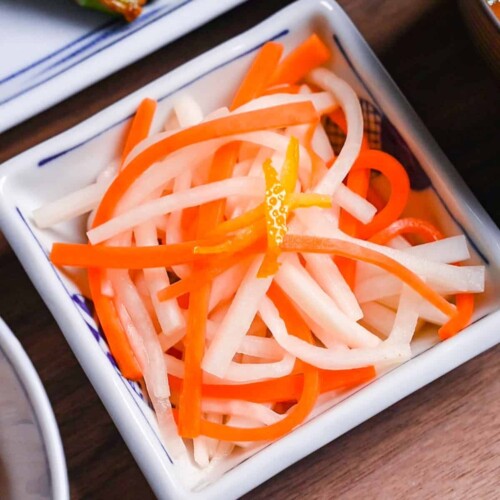
Kohaku Namasu with Yuzu (Japanese Pickled Daikon and Carrot Salad)
Ingredients
- 200 g daikon radish
- 100 g carrot
- ½ tsp salt to dehydrate
- 2 tbsp rice vinegar
- 3 tbsp water
- 2 tbsp sugar
- ¼ tsp salt for pickling liquid
- 1 tbsp yuzu juice
- ¼ tsp Japanese soy sauce (koikuchi shoyu)
- 1 tbsp yuzu peel
- 5 g dried kelp (kombu) kombu
My recommended brands of ingredients and seasonings can be found in my Japanese pantry guide.
Can’t find certain Japanese ingredients? See my substitution guide here.
Instructions
- Cut off the rounded edges of 200 g daikon radish and 100 g carrot to make them into blocks. Thinly slice, then cut into 2-3mm matchsticks.

- Place them in a bowl with ½ tsp salt and mix by hand. Rest for 15 mins to draw out the excess moisture.

- While you wait, add 2 tbsp rice vinegar, 3 tbsp water, 2 tbsp sugar, ¼ tsp salt, 1 tbsp yuzu juice and ¼ tsp Japanese soy sauce (koikuchi shoyu) to a sealable bag and scrunch to mix. Once the sugar and salt has dissolved into the mixture, add 1 tbsp yuzu peel (if using fresh yuzu) and 5 g dried kelp (kombu).

- After 15 mins have passed, thoroughly squeeze the daikon and carrot to remove the excess water. (Do not wash.) Add them to the bag, push the air out and seal. Store in the fridge overnight.

- Enjoy!
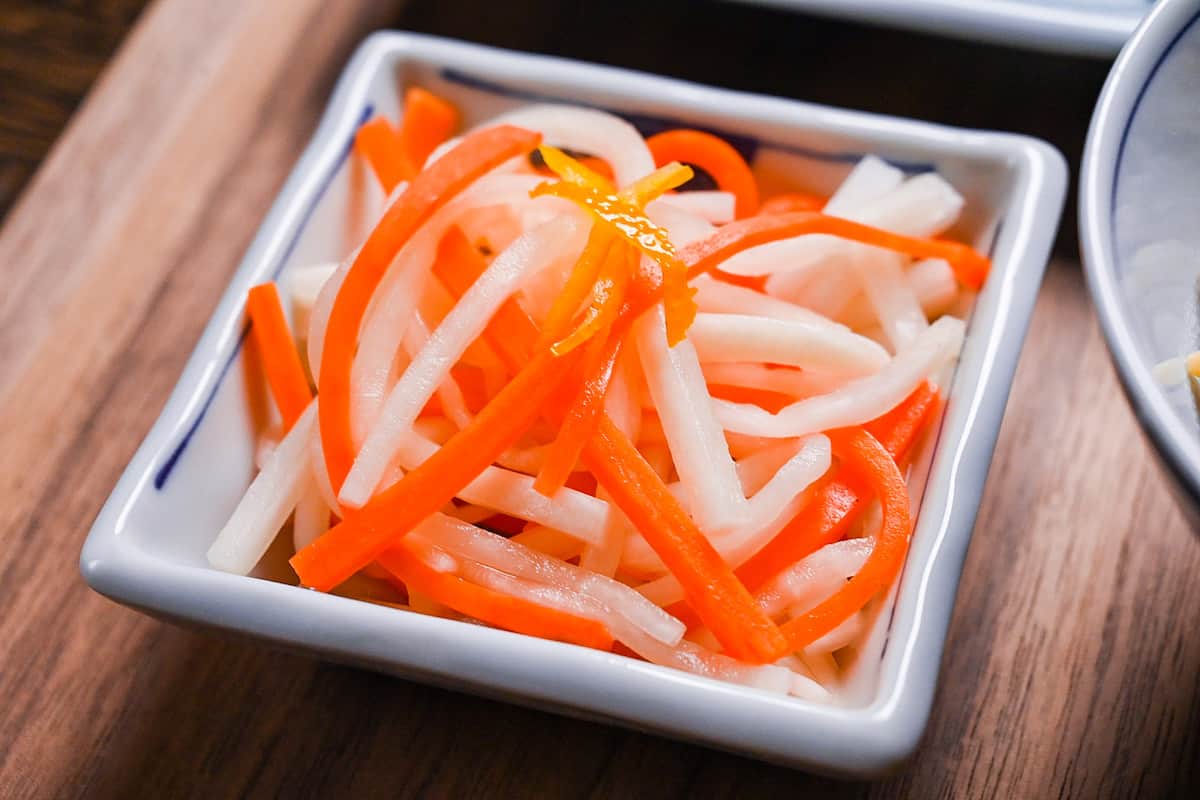
Video
Notes
- Store in the fridge and consume within 4-5 days.
- Note: The nutritional information includes the pickling liquid.
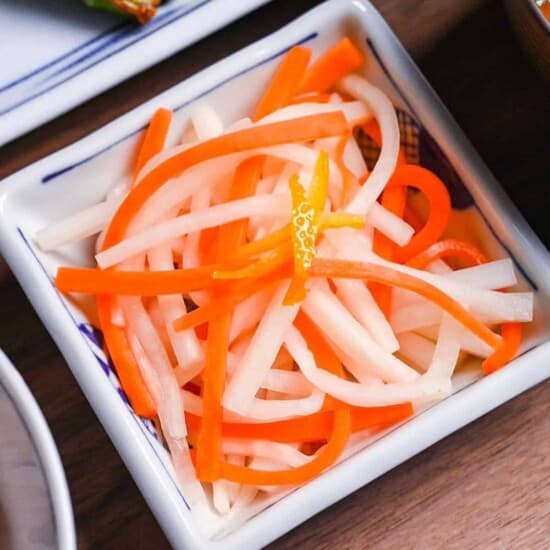



Is there any substitute for yuzu juice as it’s hard to find where I live
Hi Belinda,
Thank you for your question! A good substitute for yuzu juice is a 50/50 mixture of fresh orange juice and lemon juice. This combination mimics yuzu’s unique balance of sweet and tart citrus flavors. You can also add a small splash of lime juice for extra complexity if desired!
Yuto